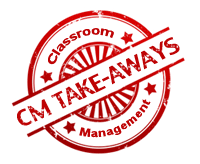
- Classroom rules and routines need to be systematically taught.
- Teach students how to peacefully coexist in their classroom.
- Transform “unsocialized” kids into top classroom performers.
Researchers identified the most common rules and routines used by successful teachers at both the elementary and secondary level. We asked master teachers from around the country to help develop and field test lesson plans for the common rules and routines which are critical to successful school and classroom functioning. These lesson plans can set the foundation for a structured environment. Therefore, these plans become part of a strategy that all children need to learn and all teachers need to teach.
In our seminar, we will provide a very powerful format for you to follow to develop your own lesson plans for rules and procedures.
Don’t just assume students know how to behave—teach them!
The first month, first week, and first day of school are critical to classroom management. Successful teachers devote a great deal of time during the first few weeks of school to the careful teaching of rules and routines. Instead of telling and posting, they teach and practice crucial classroom routines just as they would academics. The one hundred eighty school days in a year are made up of routines, procedures, and rules to govern relationships.
They set the foundation of a structured environment all children need to learn and all teachers need to teach.
Researchers have long investigated the most common rules and routines addressed by successful teachers at both the elementary and secondary level.
We asked master teachers from around the country to help develop and field test lesson plans for those common rules and routines critical to successful school and classroom functioning. Teaching to expectations is not about trying to form unthinking automatons or youngsters devoid of divergent thought. Quite the opposite. Teaching to rules and procedures will set the stage for structure in your classroom for divergent and creative discovery and learning. Caring can be orderly and structured.

